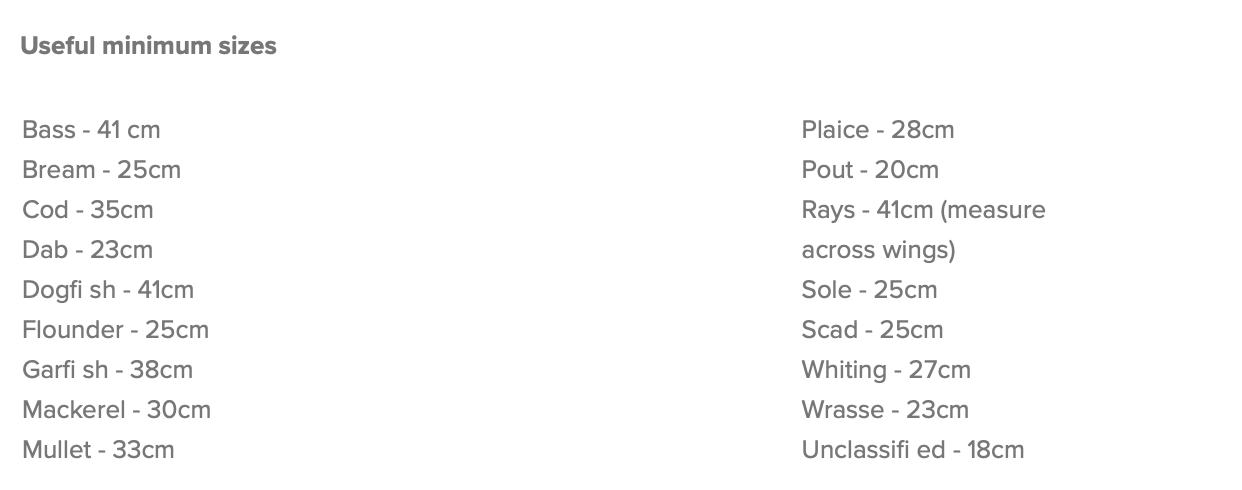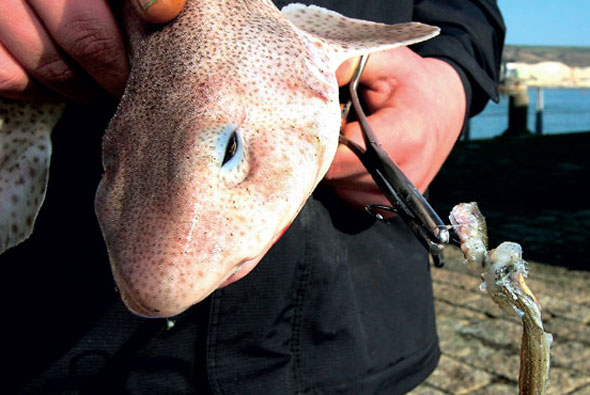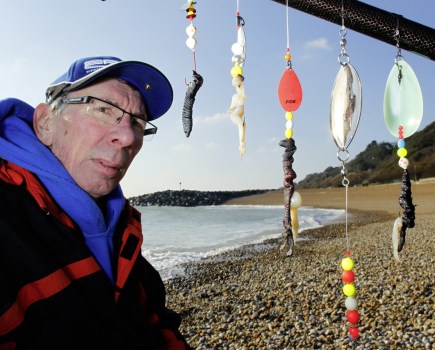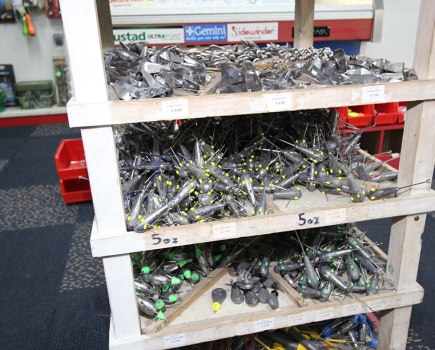Fish survival is critical and the first thing you have to learn is to get a hook out quickly and cleanly. Alan Yates, a man who has released a million fish, tells you how to do it in a blink of an eye.
WATCH AN EXPERIENCED sea angler remove a hook from a fish and it’s all over in a split second. For many novices and even some experienced anglers it can be a traumatic and difficult task, especially if the fish is hooked deeply.
The welfare of the fish is our first consideration but because the majority of fish are small, many less than 1lb, and the standard hooks fairly large at around size 2 to 2/0, there is a chance that the fish’s relatively small mouth can be damaged unless we are careful.
If you are fishing for the pot, and lots of sea anglers still do, then damaging the fish isn’t an issue because it has already been dispatched. However, if you want to return most of the smaller fish you catch, removing deeply embedded hooks is a skill you have got to master. Preventing fish taking hooks deeply is not an option. You can use bigger hooks, although when they contact a fish they may do more damage. The problem is compounded by the fact that most of the species we catch eat first, swallow second.
Striking early can help, but it is not a consistent solution and often the range we fish at and the tackle used only registers a bite when a fish, in all probability, is already hooked. So you can’t get round the fact you have got to remove hooks efficiently.
Unhooking quickly is mostly about angles, you simply need to manoeuvre the hook so that you are pulling against the barb only. Anglers have major problems because they pull against the hook bend.
Practice will make you efficient and if you struggle get an experienced angler to show you the methods.
Disgorgers, de-hooking pliers, longnosed pliers and artery forceps can all be used to make the task easier and less harmful to the fish, but again there is a technique and skill to the process. A disgorger is not a short cut to easy unhooking if you don’t know how to use it!

Artery forceps can be used to remove hooks
CHOOSING HOOKS
LONG-shanked hooks are easier to remove than short-shank ones. Short shanks may present a bait better, but long-shanks are the easiest to remove simply because there is more of the shank to grab so you can twist, angle, bend or push to get it free.
Soft-wire hooks are another commonly used option, although these can straighten when pulled and a sharp barb can cut the fish internally. Micro barbed or even barbless hooks are another option, although barbless are not commonly available and are unpopular because fish can get off.
The large amount of stretch in mono line fished at long range can allow a barbless hook to fall out. However, fishing with barbless hooks is practical at short range and for conservation only sea fishing.
A compromise is to use a crushed barb. Simply squash the barb with a pair of pliers; this way you retain a fish holding bump at the hook point rather than a sharp barb.
Another alternative is to use far smaller hooks. Coarse anglers catch giant fish on tiny hooks and it is possible to do this at sea, providing your tackle is balanced and your catch does not have to be lifted.
Sea match anglers are increasingly adopting hooks down to size 10 because of the increase in catch and release events and these are far easier to remove without damaging the fish. Small hooks are also easier to remove with a freshwater-type disgorger.
 DISGORGER CHOICES
DISGORGER CHOICES
LOTS of sea anglers use their finger as a disgorger. Here you simply push your finger into the bend of the hook, push the hook and remove. Great for toothless fish, but not so easy with species like whiting, which have dozens of tiny razor-like teeth.
One of the best disgorgers around is made by Gemini. It is absolutely magic for dogfish, whiting and others with small teeth that can make a mess of your fingers.
Using your right-hand, simply slide the eye of the disgorger on to the line and push it down to the hook bend. Pull the hook snood line really tight with the left hand in the opposite direction and shake the fish and it should fall off the hook.
For boat fishing or bigger fish like congers, cod and ling, use a larger T-bar disgorger, which works on the same principle as the Gemini. A freshwater disgorger, like the largest Slamo model, is good for removing smaller hooks from flatfish and eels.
CARE OF THE CATCH
RETURNING fish after the hook has been removed is simply a matter of slipping them back in the water gently and as quickly as you can.
There is a range of potential problems, such as a long drop to the water when fishing from piers and cliffs, while some species are more delicate than others and the size of the fish makes a big difference to its potential survival.
You can use a drop net or bucket; some simply drop the fish head first from as low a point to the water they can. Placing a small fish in a bucket of water allowing it time to recover before returning it can also improve the survival rate.
Careless handling of fish is a major cause of casualties. Many delicate species, like pollack, pout and cod, lose scales and slime and are prone to being dropped when they wriggle.
A wet cloth is generally recommended for handling fish, although many anglers consider it better not to handle small fish at all if possible. Some species can be held by the mouth, which causes less damage to their flanks.
Hanging them from the hook snood is a better alternative than gripping the body. Dogfish, smoothhounds and rays are tougher and can be handled causing them less harm, but you might be in danger from rough skin and thorns.
There are several ways to preserve fish for the pot, especially when they are caught early in a session on a hot day. Gutting the fish prevents the flesh going soft quickly, as does keeping fish separate from one another. Lay them in a covered cool box, bag or fish box. Don’t cram them in a plastic bag and then leave them in the sun.








